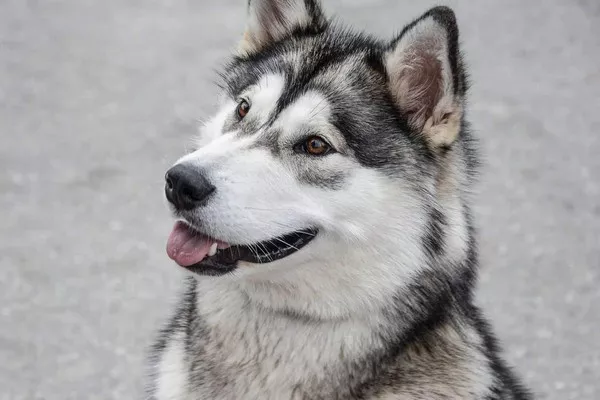Dog agility competitions have become increasingly popular over the years, captivating both dog enthusiasts and spectators alike. These thrilling events showcase the agility, intelligence, and bond between dogs and their handlers. Participants navigate through challenging obstacle courses, testing their speed, accuracy, and ability to work as a cohesive team. In this article, we delve into the captivating world of dog agility competitions, uncovering the rules, course design, training aspects, and the benefits these events bring to dogs and their owners.
1. The Essence of Dog Agility: A Harmonious Partnership
Dog agility is a sport that epitomizes the partnership and communication between a dog and its handler. The handler guides the dog through an intricate course, aiming to complete it in the fastest time while avoiding faults such as knocking over obstacles or missing contact zones. The bond between the handler and their canine companion plays a crucial role, as agility requires precise verbal and non-verbal cues to direct the dog through the course.
2. The Obstacle Course: A Test of Skill and Speed
The agility course is a dynamic arrangement of various obstacles, strategically placed to challenge the dog’s agility and the handler’s direction-giving abilities. Common obstacles include:
Jumps: Dogs soar over hurdles of various heights, showcasing their ability to clear obstacles with grace and precision.
Tunnels: Dogs dash through flexible tunnels, often curving or slanting, testing their courage and willingness to follow their handler’s commands.
Weave Poles: Dogs weave through a series of closely spaced poles, displaying their agility and ability to navigate tight spaces.
A-Frames, Dog Walks, and Teeters: Known as contact obstacles, these structures have designated zones that the dog must touch with at least one paw while ascending or descending.
Pause Table: Dogs demonstrate their control by sitting or lying down on the pause table for a specified duration before resuming the course.
Tire Jumps: Dogs jump through a suspended tire, showing off their accuracy and ability to maneuver through a unique obstacle.
3. Scoring and Rules: Achieving Perfection
In dog agility competitions, each run is timed, and the dog-handler team is penalized for faults. The objective is to complete the course as quickly as possible while avoiding mistakes. Scoring is typically based on two factors: time and faults.
Time: The team’s overall time, starting from when the dog crosses the start line until they successfully finish the course, is recorded.
Faults: Penalties are incurred for various mistakes, such as knocking down a jump bar, missing contact zones, refusing an obstacle, or taking the wrong course path.
4. Course Design: A Puzzle for Dogs and Handlers
Crafting an engaging and challenging agility course is an art form that requires both creativity and technical expertise. Course designers must consider factors such as the dog’s height and experience level, the available space, and the level of difficulty appropriate for the competition.
Sequences: Courses are divided into sequences, each containing a set of obstacles that test specific skills. Handlers must decide on the best strategies to navigate through the sequences efficiently.
Course Maps: Before each run, handlers are given a course map, which outlines the sequence of obstacles they must tackle. They study the map to plan their route and analyze potential challenges.
5. Training for Agility: The Key to Success
Training is an integral part of preparing both the dog and the handler for agility competitions. Successful training focuses on building the dog’s confidence, understanding, and physical abilities, as well as honing the handler’s communication skills.
Positive Reinforcement: Reward-based training techniques, such as using treats or toys, are commonly employed to encourage dogs to perform desired behaviors.
Foundation Training: Dogs start with foundation training, which teaches basic skills like jumping, weaving, and targeting. This forms the basis for more advanced agility maneuvers.
Handling Techniques: Handlers learn various handling techniques, including front crosses, rear crosses, and blind crosses, to direct their dogs through the course effectively.
Practice and Repetition: Consistent practice and repetition help dogs and handlers refine their skills and develop a seamless partnership.
6. The Different Classes of Agility Competitions
Dog agility competitions offer different classes based on the dog’s experience level and the complexity of the course:
Novice Class: Designed for beginners, the novice class features straightforward courses with fewer challenging elements.
Open Class: Open class courses are more complex and demanding, suitable for dogs and handlers with some experience.
Excellent Class: Reserved for highly skilled teams, excellent class courses present intricate challenges that require advanced training and precision.
Masters/Championship Class: The highest level of competition, this class features the most challenging courses, pushing the limits of the dog-handler partnership.
7. Benefits of Dog Agility: Beyond the Competition
Participating in dog agility competitions offers numerous benefits for both dogs and their owners:
Physical Exercise: Agility provides an excellent outlet for dogs to burn off excess energy and stay physically fit.
Mental Stimulation: The problem-solving nature of agility courses keeps dogs mentally engaged and sharp.
Bonding and Trust: Agility strengthens the bond between dogs and their handlers through collaborative training and teamwork.
Confidence Building: Successfully completing obstacles boosts a dog’s confidence and self-assurance.
Socialization Opportunities: Competitions offer a chance for dogs to interact with other dogs and handlers in a controlled environment.
Conclusion: The Thrill of Agility Unleashed
Dog agility competitions are a thrilling showcase of teamwork, skill, and the special bond shared between dogs and their handlers. As the popularity of this sport continues to grow, more people are discovering the joy of training and competing with their canine companions. Whether participating for fun, exercise, or the pursuit of excellence, dog agility offers countless rewards and unforgettable moments, making it an extraordinary experience for all involved. So, let the agility adventure begin – boundless excitement and wagging tails await!


